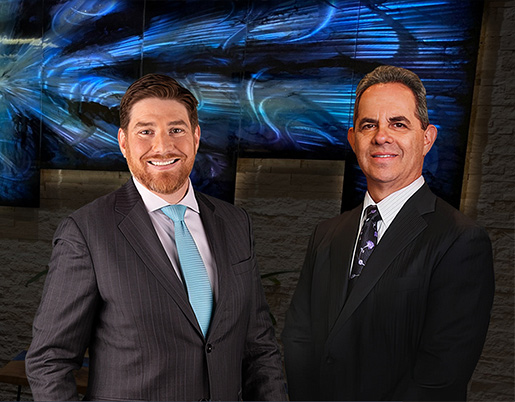As one of the most effective automobile safety features invented, seat belts save thousands of lives every year. Unfortunately, one in five Americans fail to regularly wear their seat belt while driving or riding in a motor vehicle. Continue reading
Tag Archives: NHTSA
Better Communication Results In Automobile Safety
According to the National Highway Traffic Safety Administration (NHTSA), improvements in the automobile recall process is the direct result of better communication between the regulators and manufacturers. He also added that substantial increases in fines for not reporting a recall promptly was also a big factor in encouraging manufacturers to be more pro active with recalls Continue reading
Consumer Complaints Play Big Roll In Auto Recalls
The United States has one of the most effective automobile investigation and recall programs in the world. Because of the hard work of the Office of Vehicle Safety Compliance (OVSC) and the National Highway Traffic Safety Administration (NHTSA) team, every day millions of drivers can feel safer on our roadways. Continue reading
New Safety Rules For Buses And Trucks
The National Highway Traffic Safety Administration’s (NHTSA) main function is to prevent injuries, deaths, and reduce expensive costs due to traffic accidents. Their mission also includes issuing Corporate Average Fuel Economy (CAFE) standards to contribute to energy security and address climate change. Continue reading
Toyota Fined For Recalls
Toyota will be fined the maximum penalty of $17.4 million for the second time since 2010, for failing to report automobile defects in a timely manner. In June of this year, Toyota announced a recall of over one hundred and fifty thousand 2010 Lexus RX350 and 2010 Lexus RX450H vehicles for problems with floor mats that could interfere with the accelerator pedal. Continue reading
NHTSA Warns Of Dangerous Lemon Airbags
The National Highway Traffic Safety Administration (NHTSA) is warning car owners to get their vehicle inspected for potential lemon airbags. This includes any airbags bought online, used vehicles where the owner is unsure if the airbags have been replaced, and any owner who has had their airbags replaced by an independent repair shop not connected to a new car dealership. It is estimated that only 1% of U.S. vehicles may be affected by the problem, but that equals to tens of thousands units. Continue reading
Teen Driving Safety
Automobile accidents are the leading cause of teenage deaths in the United States. Statistics show that in 2010, approximately 2,700 teens were killed and almost 282,000 were treated for injuries, giving them the highest average annual crash and traffic violation rates of any other age group. What causes teenage drivers to be such risky drivers? According to the California Department of Motor Vehicles, there are several risk factors. They include:
- Poor hazard detection
- Low risk perception
- Higher risk taking
- Lack of seat belt use
- Lack of skill
- Alcohol and drugs
- Distractions
- Carrying passengers
- Night driving
The NHTSA believes there are proven methods to help teens become safer drivers, and have developed strategies to prevent motor vehicle related deaths and injuries. In July 1998, California enacted a new law that requires all new teen drivers to obtain drivers licenses through a three-step process. Research suggests that these graduated drivers licensing (GDL) programs can reduce accidents by up to 40%, by allowing teens to get their initial driving experience under low risk conditions. Under the program, step one includes:
- The student must drive with an adult over 25 years of age or with a licensed instructor.
- New drivers must complete a 6 hour drivers training course.
- He or she must keep a clean driving record.
- A zero tolerance towards alcohol must be followed.
- Effective July 2008, a ban on all devices, with or without hands free capability, must be followed by drivers under 18 years.
Once the student is ready to move on to the second step, they will receive a provisional license. Under the provisional license the driver must be older than 16 and have passed a behind the wheel driving test. For the first 12 months, or until the driver is 18, they are not allowed passengers under the age of 20 or to drive between the hours of 11 P.M. – 5 A.M. unless a licensed driver 25 years or older is present.
A full-privilege license may be granted after the driver successfully undergoes the first two steps for the proper amount of time and there are no outstanding DMV or court-ordered restrictions, suspensions, or probation’s on the driver’s record. The NHTSA encourages parents to work with their teenagers and monitor their driving to ensure their safety and the safety of everyone on the road.
Mazda Tribute Problems Same As Ford Escape
Safety advocates encouraging a recall of certain 2002-2004 Ford Escape vehicles are also asking the National Highway Traffic Safety Administration (NHTSA) to include the 2002-2004 Mazda Tribute in their investigation. According to the group, both sport utility vehicles (SUV) are similar vehicles built on the same assembly line. In 2004 Ford and Mazda issued identical recalls for unintended acceleration caused by an accelerator cable that may not return to the idle position. Ford later issued a technical service bulletin that warned dealers that an improper repair could lead to an adjacent cruise control cable being damaged and snagging on the engine cover causing unintended acceleration. The Center for Auto Safety say that because the vehicles are so similar and there is no way of knowing whether the recalls were carried out correctly, Ford and Mazda should issue a recall to ensure the safety of the vehicles.







